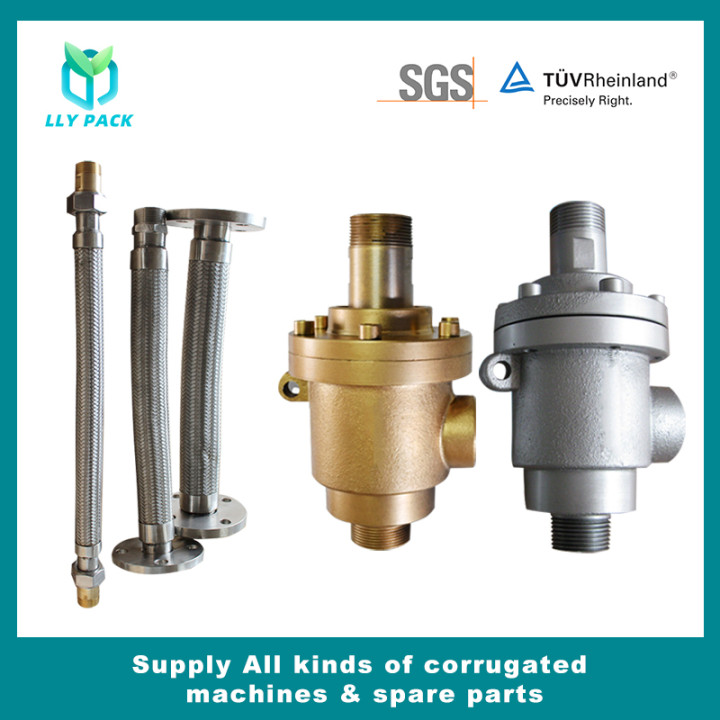The formulation of ink-and-wash standards can consider the feasibility of implementation of the standards in terms of the production, use, inspection, arbitration, circulation custody and warehousing of ink and wash. After the standards have been formulated, they can play the role of the following aspects, and make subsequent regulations for each specific aspect of ink-ink standardization.
(Level 1) Formulation of Ink and Wash Standards
Safeguarding the legitimate rights and interests of all parties
As far as the problems of ink printing in the printing process are concerned, the ink and wash suppliers have adopted specialized technical personnel for large customers to solve the problems by transferring ink to the factory. However, many of the quality problems and technological problems in the use of small customers are left to the carton factory. The printing factory handles it by itself. If the ink and ink standards are available, the legitimate interests of small users can be guaranteed.
It can ensure the stability of ink manufacturing quality, and prevent and reduce some unnecessary losses in the production, use, inspection and storage of ink.
Producers and users have a basis for judgment in the event of a dispute. There are also grounds for inspection and arbitration by relevant agencies.
After nearly 10 years of development, domestic ink painting has gradually matured. Formulating standards can further promote and promote the improvement of the quality of ink and wash in China.
It is conducive to the harmonization of inspection methods and improvement of the production, use, inspection, storage, transportation, and storage of ink-ink painting in China.
(Level 1) Range, Project and Content of Ink Standardization
The scope, items, and content of the standardization of ink painting should include the following performance indicators. Because these indicators have a direct impact on the printing of corrugated boxes, and can reflect the status of the ink.
(Grade 2) Quality of Ink Materials
The technical quality requirements of the main materials of ink and wash have a direct impact on the quality of ink and wash:
? Binder (various resins):
The resins available for use in inks include nitrocellulose, acrylic resins, polyketone resins, epoxy resins, alkyd resins, shellac, and rosin resins. Different resins have a greater impact on the performance of inks, so specific quality requirements and regulations for resins used in inks of different models (ie, different grades) should be addressed.
Pigment quality requirements
The colorant is a coloring matter of the ink and is required to have resistance, such as light resistance, high temperature resistance, weather resistance, dry friction resistance, bright color and strong coloring power. If the chromatogram is complete, the color concentration is high, and high hiding power is easily achieved. The quality of the ink and the requirements for the color of the ink should also be stipulated.
? Solvents and additives quality requirements
The solvent of water ink is water, and the auxiliary agents mainly include stabilizers, defoamers, wetting and dispersing agents, pH adjusters, slow drying agents, desiccants, slip agents, etc., and can be attached to the standard after the attachment is used. User reference.
(secondary) color and tinting power
The same type of ink should maintain its hue stability, even if the printed products in different batches still maintain a certain printing color. When printing the first batch of products, the printing samples are generally collected for archiving so that the same product can be checked later. Coloring power refers to the size of an ink that affects the degree of change in another ink color. When a spot color ink is dispensed, when the hue or tinting strength of one of the original inks changes, the color of the spot color ink that is called out changes. Strong coloring, can ensure that the imprinting has a high hiding power, coloring power should be ≥97%.
(secondary) viscosity
The viscosity of the ink is the size of the cohesive force of the flexo-printing water-based ink, and is one of the most important control indicators of the ink. The ink viscosity should also be clearly defined in the ink standard. In the printing process, the ink has a certain viscosity is necessary to maintain the normal transfer, transfer of ink. Because the viscosity determines the ink transfer performance, the ink transfer system affects the transfer of ink, and the fastness of the print, the gloss of the color, and the stability of the ink transfer amount, the viscosity of the high-grade ink is generally controlled at about 20±5 seconds. The difference will cause different shades of printing color, too much viscosity will cause the following usage defects:
Ink transfer and transfer are difficult because the speed of the flexo printer is generally very fast. Especially when the first color is printed to the second color, the interval is only a few seconds to a few tenths of a second. If the viscosity of the ink is large, it will be difficult to separate. , slow transfer, dry slowly.
• It is easy to cause the paper to pull and remove powder, and some cause peeling.
• It is difficult to fill in the cells, and it is difficult for the scraper to scrape off the ink on the part of the wall. It has been proved that under the same conditions, the state of the ink with low viscosity is more favorable than the transfer of the ink with large viscosity, so the flexo The ink for printing plates is generally of low viscosity, and the most suitable viscosity range for printing is preferably controlled between 17 and 25 seconds. However, the viscosity of ink cannot be too small, otherwise it will easily cause the ink in the dots at the time of imprinting to be easily deformed, and the dots will expand, which will deteriorate the reproducibility of the graphic and graphic texts. In severe cases, it will cause the ink to emulsify, or make it unable to transfer and transfer normally. And gradually accumulate pigments on the anilox roll and printing plate. When the accumulation reaches a certain level, it will cause paste plate.
(Secondary) PH
PH value of the ink viscosity: the ink is generally weakly alkaline, printing PH value control is very important, when the PH value is higher than 9.5, the alkali is too strong, the ink viscosity decreases, the drying speed slows, water resistance Poor performance. When the PH value is lower than 8.5, the alkalinity is too weak, the viscosity of the ink will increase, and the transferability will be deteriorated. The ink will be easy to dry, and the printing plate and the anilox roller will be easily jammed, causing the layout of the plate to be dirty, and the paste plate failure will occur. bubble. PH mainly relies on ammonia compounds to maintain, but due to the volatilization of ammonia during the printing process, in order to maintain the stability of ink and ink performance, it is necessary to avoid the leakage of ammonia as much as possible. In production practice, many users take regular and quantitative measures. Add stabilizer to the ink tank to solve. The normal range of PH value in the proposed standard is 8.5 to 9.5. The printing performance of the ink is better at this time, and the printing quality is stable. The influence of PH on the printability of the ink is mainly manifested in both the viscosity and the drying property of the ink. In the actual production process, the PH value of the ink on the machine can be adjusted or controlled between 8.0 and 9.5, depending on the product and the temperature.
(secondary) drying speed
The drying speed of ink and ink affects the printing speed. In particular, high-speed printing requires the drying speed of the ink. For example, in the case of pattern superimposition, due to the difference in the drying speed of the ink, the color shift of the printing color and the superposition of the printing may be inferior. The rapid drying of the ink will cause a layer of film on the surface of the printing plate, which will affect the transfer of the ink and ink, resulting in the formation of ink deposits and agglomerations in the small-size printing plate to make the printing fuzzy, and it will also make the ink not easily preserved and easily solidified. Deterioration. Therefore, the ink drying performance should be given an assessment index. It allows the user to adjust the drying speed of the ink according to the product or substrate, ensuring the ink drying is good while taking into account the suitability of the viscosity and the stability of the PH value.
(Secondary) wear resistance
The abrasion resistance of ink is related to the quality of the resin material used. The level of abrasion resistance directly affects the dry-friction resistance of printed products during handling. After corrugated cartons are printed and printed, they must be repeatedly subjected to the friction of carrying, reloading, and loading and unloading to finally reach the consumers. Therefore, the abrasion resistance of ink blots is an important assessment index for ink painting.
(secondary) anti-rotation performance
Light-resistance performance: Paper-based packaging prints are transported, stored, and displayed many times after being produced by a production company until they finally reach the consumers. Products printed with inks that are poorly light-resistant are in compliance with the requirements of the paper-based packaging manufacturing company, but color deviations or discoloration may occur after circulation. As a result, there will be controversies between the supply and demand sides. This is also a piece of information that should not be overlooked when the standards are formulated.
(secondary) solids
Solid content refers to the proportion of solid content of water, resin, pigment, and other additives in the water. The solid content of the ink and ink has an effect on the economic indicators and quality indicators of the ink. Solid ink content should be ≥ 45 ± 5%.
(Secondary) fineness
Fineness refers to the size of the toner particles in the ink. It is an important quality indicator. The fineness of the ink should be 10 to 20 μm.
(Level 2) Packaging, Storage and Handling Requirements for Flexo Printing Water Based Inks
Packaging containers and their identification
Sealing packaging ink with plastic buckets can meet the requirements. The packaging should prevent ammonia and alcohol substances in the ink from evaporating. It can prevent dust from falling into the ink and cause the ink ink performance to be unstable. In addition, each ink type, package weight, delivery date, expiration date, manufacturer and contact information should be marked and described.
? Handling, storage and storage requirements
Ink and wash should be lightly loaded and unloaded to prevent damage to the packaging and containers, and be stored in a cool, dry place. After the inks have been left for a long time, some poorly stabilized inks are prone to sedimentation, delamination, and, in some cases, false thickening, and can be fully stirred before use. When using fresh ink, be sure to mix evenly in advance, and then use thinner for dilution adjustment.
(a) inspection and acceptance rules
When performing spot checks on each batch of ink, the ink-and-wash standards should specify: the method, proportion, and criteria for the determination of flexo-printed aqueous inks. The inspection and measurement methods and inspection methods formulated for the inspection, in addition to the large enterprises, can also meet the actual operations and monitoring of ink and wash ink by small companies.
(a) inspection tools and instruments
Manual color development wheel, standard color model, coated 4# cup, PH tester, chemical reagent, friction tester, and other items.
Source: Global corrugated box industry










